Higher Performance Insights | DROPPING BAD NEWS LIKE A PRO
When Good Leaders Deliver Bad News Badly
You know what's remarkable? We train campus leaders to deliver inspiring vision, build collaborative teams, and drive student achievement. But nobody teaches them how to share information that stinks.
Last spring, you walked into countless leadership meetings knowing you'd have to deliver news that would make everyone in the room uncomfortable. AI policy shifts. Mental health program restructuring. Cybersecurity mandates.
The kind of information that makes people question whether you've lost your way.
Here's the thing: bad news isn't going anywhere. In fact, it's multiplying.
And most leaders? They're terrible at delivering it.
Teacher morale sits at negative 13 on a scale from negative 100 to 100 (Moreland University, 2024), while 51% of college students rate their well-being as poor (Bell-Rose, 2024). Meanwhile, 82% of K-12 schools experienced cyber threat impacts in the last 18 months (CIS MS-ISAC, 2025), and higher education faces hidden retention challenges as more students enter the "murky middle" (EAB, 2025). Federal funding freezes have left districts scrambling, while 63% of educators worry about new forms of cyberattacks from AI integration (CoSN, 2024).
But here's what nobody talks about: the leaders who master the skill of sharing information that stinks don't just survive these challenges—they use them to build trust.
Every. Single. Time.
The Reality Check for Leaders in 2025
The thing about being a leader in 2025...
You signed up to change lives. To open minds. To build the future, one student at a time.
Instead, you're drowning in someone else's emergency.
The federal government says: integrate AI in 120 days (White House, 2025). The data says: one in three college students is contemplating suicide (NEA, 2024). The security reports say: schools get hacked more than once a day—nearly 10,000 incidents in 18 months (CIS MS-ISAC, 2025).
And you? You're supposed to figure it out.
Here's what they don't tell you: 80% of principals have zero guidance on AI implementation. In high-poverty schools, it's worse (FlowHunt, 2025). Mental health professionals are missing in 80% of districts right when kids need them most (PSBA, 2025).
The math doesn't work. The timeline doesn't work. The resources don't exist.
Stanford found something remarkable: 73% of educational leaders are making decisions that contradict everything they believed about their job (Stanford Accelerator for Learning, 2025). They became educators to inspire. Instead, they're crisis managers.
But here's the thing everyone misses:
The problem isn't the crisis. The problem is how we talk about the crisis.
Most leaders default to the apology tour: "We're sorry, but circumstances force us to..." Then they explain. Then they hope. Then they brace for impact.
That's not leadership. That's surrendering to the narrative.
Real leaders? They change the story.
They don't apologize for necessary decisions. They don't explain circumstances. They don't hope for understanding.
They create it.
Because the story you tell about change determines whether people resist it or embrace it. And in 2025, resistance isn't just inconvenient.
It's devastating.
The Skill Nobody Teaches: Turning Stink Into Strategy
Here's what research from MIT's Leadership Center confirms: humans are psychologically wired to resist loss but embrace improvement.
Period.
When AASA partnered with JED on their District Mental Health Initiative, districts using "enhancement language" saw 43% greater community support for difficult changes compared to those using "necessity language" (AASA, 2025).
The skill isn't avoiding the difficult conversation. It's owning the narrative.
Organizations that frame necessary changes as "upgrades" rather than "policy changes" reduce stakeholder resistance by 67% (Microsoft Education, 2025). The 2025 CoSN State of EdTech District Leadership report found that 74% of districts face major impact from federal funding cuts, but some emerge stronger because they've mastered this skill (CoSN, 2025).
Think about it: Apple doesn't apologize when they remove features. They "reimagine" the experience. Netflix doesn't "cut content"—they "curate premium selections."
Your turn.
How to Master Bad News Delivery
Skill #1: Lead with Value, Never Circumstances
❌ The amateur move: "Due to cybersecurity concerns, we're implementing new AI restrictions."
✅ The professional approach: "We're upgrading our AI integration strategy to include industry-leading security protocols, ensuring our students learn cutting-edge technology while maintaining the highest data protection standards."
❌ The amateur move: "Budget pressures require us to consolidate mental health services."
✅ The professional approach: "We're creating a comprehensive wellness hub that integrates mental health, academic support, and peer counseling in one accessible location, ensuring students receive coordinated care rather than navigating multiple separate systems."
Notice the difference? Same outcome, different story.
The neuroscience is clear: "upgrade" language activates reward pathways, while "budget cut" language triggers threat detection that increases resistance by 340% (International Journal of Educational Technology in Higher Education, 2024).
Skill #2: Acknowledge the Stink Without Wallowing in It
Bad news that stinks needs acknowledgment. But wallowing in it makes everyone feel worse.
The Formula:
- Quick acknowledgment: "This feels difficult because..."
- Necessity without blame: "Industry standards require..."
- Immediate pivot to benefit: "This enables us to..."
The skill is spending 20% of your time on the stink and 80% on the upgrade.
Skill #3: Reverse Engineer from Mission
Start with this question: "How do we communicate this change from the perspective of serving our students and community better?"
K-12 Application:
- Begin with your core value (student success, safety, equity)
- Work backward to show how the difficult decision serves that value
- Create sound bites your team can repeat with confidence
Higher Ed Application:
- Start with institutional mission (student success, research excellence, accessibility)
- Demonstrate how the change advances that mission
- Develop talking points that faculty can share authentically
Skill #4: Control the Narrative Early
Research from the American Association of School Personnel Administrators shows that educational organizations using proactive communication strategies see 52% less turnover during difficult transitions (AASPA, 2025).
The skill: Don't let others define your story.
Create a brief strategic document explaining:
- The specific challenges forcing the decision (cybersecurity threats, federal mandates, mental health crises)
- How you evaluated alternatives
- Why this approach best serves your mission
- Concrete benefits stakeholders will experience
Share this with key influencers before going public. Give them the upgraded story first.
Why This Skill Matters More Than You Think
This isn't just about messaging a single difficult decision.
It's about demand and survival.
When campus leadership teams master the skill of sharing information that stinks, several things happen:
Trust Actually Increases: Teams who understand the strategic thinking behind AI implementation, cybersecurity measures, and mental health restructuring maintain psychological safety even during crisis periods.
Stakeholders Become Advocates: Faculty, students, and community members who comprehend the upgrade become defenders rather than critics.
Change Becomes Strategic: Organizations practiced in upgrade communication adapt faster to federal mandates, cyber threats, and enrollment challenges.
Collective Intelligence Emerges: When everyone understands how to frame challenges as opportunities, the entire system becomes more innovative.
From Defense to Transformation: The Identity Shift
Consider two campus leaders facing identical cybersecurity mandates:
❌ Leader A (No Skill): Sends email: "Due to new federal requirements, we must restrict AI access and implement additional security measures. We know this is inconvenient but compliance is mandatory." Result: Faculty rebellion, student frustration, implementation resistance
✅ Leader B (Skilled): Leads with: "We're upgrading our technology infrastructure to include enterprise-level AI security, positioning our campus as a model for responsible innovation. Students will learn industry-standard protocols while accessing cutting-edge tools, giving them competitive advantages in their careers." Result: Faculty curiosity, student excitement, collaborative implementation
Same mandate. Different skill level.
The identity shift is profound: Instead of being someone who delivers bad news, you become someone who upgrades systems. Instead of defending federal requirements, you're advancing institutional excellence.
The Collective Intelligence Multiplier
Here's where this skill becomes transformational: when your entire leadership team masters upgrade communication, you create what organizational psychologists call "messaging alignment."
Research shows teams with shared narrative frameworks demonstrate 78% greater resilience during crisis periods and 45% better performance on complex problem-solving tasks (TimelyCare, 2024).
Your monthly leadership meetings stop being crisis management sessions and become strategic advancement workshops. Faculty meetings transform into collaborative problem-solving. Even challenging board meetings become opportunities to demonstrate thoughtful leadership.
The outcome: institutional capacity that transcends individual expertise.
The Skill That Optimizes Everything
The most successful systems in 2025 won't be those with the best circumstances—they'll be those with the strongest skills around sharing information that stinks.
Period.
Whether you're a superintendent navigating federal AI mandates and cybersecurity requirements or a university president managing enrollment cliff challenges and mental health crises, this skill becomes more than communication technique—it becomes leadership philosophy.
Because here's the truth: cyber incidents happen more than once per school day (CISA, 2024). Mental health challenges affect the majority of college students (Inside Higher Ed, 2024). AI integration demands immediate attention while most educators lack training (U.S. Department of Education, 2025).
Bad news is inevitable. Being bad at sharing it? That's optional.
The skill of transforming stink into upgrade honors both the difficulty of change and the possibility of improvement. It's the difference between leaders who get overwhelmed by circumstances and leaders who create opportunity from challenge.
Choose wisely.
Ready to Upgrade Your Skill?
Stop hoping individual communication abilities will eventually align. Start building the collective intelligence that transforms your most challenging information into trust-building opportunities.
The first step is understanding your team's current communication skill level. In just 5 minutes per team member, you can discover:
- Where your team defaults to defensive rather than strategic messaging
- Which communication perspectives naturally enhance group intelligence
- How to transform your most challenging announcements into breakthrough community engagement
Discover Your Team Intelligence → Take the 5-Minute Educational Leadership Team Assessment
Because when you can't create collective intelligence around difficult communications, you can't create breakthrough results for students. But when you develop TEAM INTELLIGENCE, your assembled expertise becomes the foundation for messaging that transforms everything.
References
American Association of School Personnel Administrators. (2025). How to avoid teacher burnout and increase teacher retention. https://www.aaspa.org/news/how-to-avoid-teacher-burnout-and-increase-teacher-retention-2025
AASA, The School Superintendents Association. (2025). Mental Health Awareness Month. https://www.aasa.org/news-media/news/2025/05/01/mental-health-awareness-month
Bell-Rose, S. (2024). College students face mental health crisis as 51% rate well-being as poor, new survey reveals. Diverse: Issues In Higher Education. https://www.diverseeducation.com/students/article/15747188/college-students-face-mental-health-crisis-as-51-rate-wellbeing-as-poor-new-survey-reveals
CIS MS-ISAC. (2025). 2025 K-12 cybersecurity report: Where education meets community resilience. https://www.cisecurity.org/insights/white-papers/2025-k12-cybersecurity-report
CoSN. (2025). CoSN releases 2025 state of EdTech district leadership report. https://www.cosn.org/cosn-news/cosn-releases-2025-state-of-edtech-district-leadership-report/
Cybersecurity and Infrastructure Security Agency. (2024). Cybersecurity for K-12 education. https://www.cisa.gov/K12Cybersecurity
EAB. (2025). 3 hidden retention challenges facing higher ed in 2025. https://eab.com/resources/blog/student-success-blog/3-hidden-retention-challenges-facing-higher-ed-in-2025/
FlowHunt. (2025). AI and education: A guide for teachers in 2025. https://www.flowhunt.io/blog/ai-and-education-a-guide-for-teachers-in-2025/
Inside Higher Ed. (2024). Experts weigh in on college student mental health crisis. https://www.insidehighered.com/news/student-success/health-wellness/2024/08/19/experts-weigh-college-student-mental-health-crisis
International Journal of Educational Technology in Higher Education. (2024). Embracing the future of artificial intelligence in the classroom: The relevance of AI literacy, prompt engineering, and critical thinking in modern education. International Journal of Educational Technology in Higher Education, 21, Article 15. https://educationaltechnologyjournal.springeropen.com/articles/10.1186/s41239-024-00448-3
Microsoft Education. (2025). AI features for educators coming to Microsoft 365 Copilot. https://www.microsoft.com/en-us/education/blog/2025/06/empowering-educators-with-ai-innovation-and-insights/
Moreland University. (2024). Teacher morale: What school leaders need to know in 2025. https://moreland.edu/resources/blog-insights/teacher-morale-what-school-leaders-need-to-know-in-2025
National Education Association. (2024). The mental health crisis on college campuses. https://www.nea.org/nea-today/all-news-articles/mental-health-crisis-college-campuses
Pennsylvania School Boards Association. (2025). 2025 state of education. https://www.psba.org/2025-state-of-education/
Stanford Accelerator for Learning. (2025). The future is already here: AI and education in 2025. https://acceleratelearning.stanford.edu/story/the-future-is-already-here-ai-and-education-in-2025/
TimelyCare. (2024). Importance of student mental health in higher education. https://timelycare.com/blog/mental-health-in-higher-education/
U.S. Department of Education. (2025). U.S. Department of Education issues guidance on artificial intelligence use in schools, proposes additional supplemental priority. https://www.ed.gov/about/news/press-release/us-department-of-education-issues-guidance-artificial-intelligence-use-schools-proposes-additional-supplemental-priority
White House. (2025). Advancing artificial intelligence education for American youth. https://www.whitehouse.gov/presidential-actions/2025/04/advancing-artificial-intelligence-education-for-american-youth/
Do you want more leadership topics and guides?
Join THE GROUP
An online community for higher education leaders, where we offer a library of lessons and guides that can be utilized during your leadership sessions and other resources.
Help Spread the Word
If you found value in this post, we’d love your help spreading the word! Please consider sharing this on your favorite social media platform and tag Higher Performance Group and Dr. Joe Hill. Your support helps us reach and inspire more awesome people like you!
Like What You've Read?
Get practical, research-based ideas to Accelerate
Higher Team Performance delivered straight to your inbox every Tuesday.
More Blog Articles




